Speaking of insects, everyone may have the impression of tiny bugs, but there are also many extremely large species among insects. The appearance of these giant insects is closely related to their environment and evolutionary process, but it also makes people think Marvel at the diversity and wonder of nature. This article brings you the ten largest insects in the world, namely tallow silkworm moth, titan beetle, stick insect, Actinian giant beetle, long halberd bug, Orchid island giant leaf weta, giant Flower lurking beetles, Chinese mantis mantises, rhinoceros cockroaches, desert spider wasps, let’s take a look at these huge bugs.
1. Chinese tallow tree moth (scientific name: Attacus atlas)
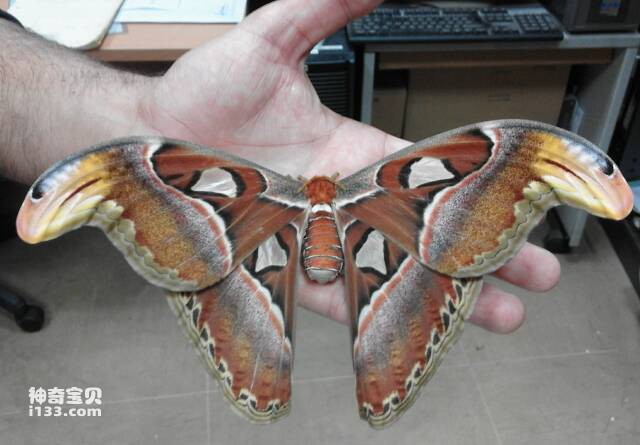
The tallow silkworm moth is the largest moth in the world, also known as the giant silkworm moth. It is a large nocturnal insect with a wide distribution and belongs to the family Silkmothidae. They are mainly distributed in South Asia, including India, Sri Lanka and Southeast Asia. The wings of the giant silk moth are very beautiful and are made up of colors such as brown, orange and white. They have strong flying ability and can fly freely in the woods. Male giant silk moths are usually larger than females, with a body length of up to 11 cm and a wingspan of up to 30 cm. Silkworm moths are perennial insects that host different hosts. Their larvae mainly feed on mulberry leaves, but they also eat oaks, maples, poplars and other plants. Adult beetles are only active at night. They like to rest on tree trunks or branches and attract mates by emitting aromatic substances. Due to its beautiful appearance and huge size, the giant silk moth is regarded as a symbol of auspiciousness and beauty in many cultures.
2. Titan beetle (scientific name: Titanus giganteus)
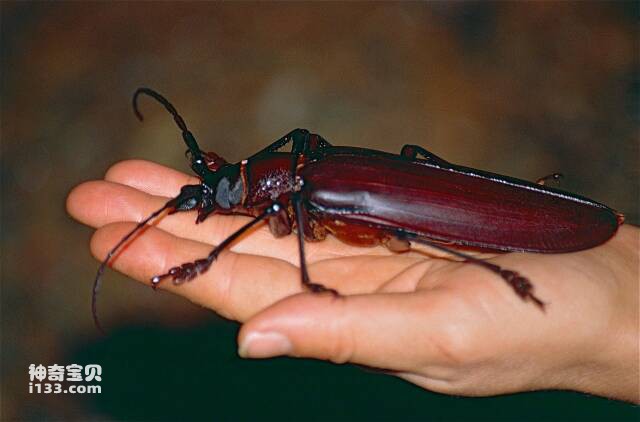
The titan beetle is an insect that lives in tropical areas of South America and is also known as the giant beetle or titan beetle. They belong to the subfamily Titanidae in the family Cerambycidae and are among the largest beetles in the world. Titan beetles are very large, with males reaching more than 10 centimeters in length and weighing about 100 grams, while females are relatively smaller, with a body length of about 6 centimeters. They have hard shells and strong tentacles that they use to dig soil and search for food. Titan beetles feed primarily on decaying vegetation, but will also eat other insects and carrion. They are usually active at night and rest in tree holes, soil holes or ruins during the day. Due to their huge size and strange appearance, Titan beetles were often regarded as mysterious and sacred beings in ancient cultures. Modern people are more concerned about their role in the ecosystem because they can decompose decaying plant matter and maintain ecological balance.
3. Stick insect (scientific name: Gongy10pus adyposus Brunner)
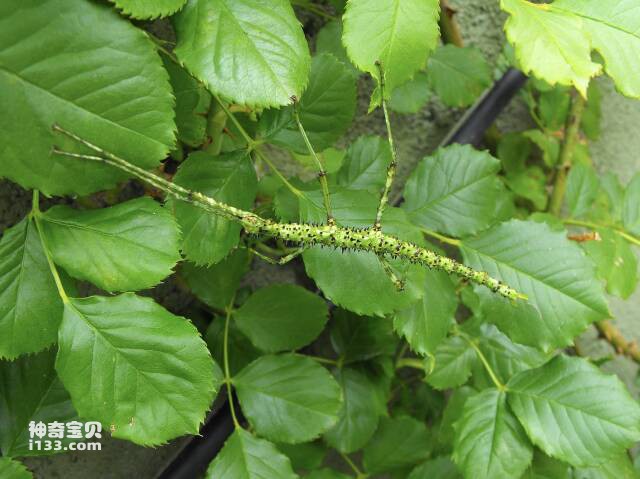
Stick insects are also known as wand insects. Their bodies are slender and strip-shaped, and their appearance is very similar to bamboo, hence the name "stick insect". Stick insects are widely distributed and mainly live in forests in Asia, Africa and South America. Different species of stick insects vary in size. The smallest ones are only a few millimeters long, while the largest ones can reach 60 centimeters in length. They usually feed on leaves, but some species also eat other insects, moss, fungi, etc. Stick insects have very good concealment capabilities. The smell, color and shape they emit are similar to the surrounding environment, making it difficult for natural enemies to detect their presence. In addition, they can quickly change their color and shape to adapt to different environments. Stick insects are a very popular creature. Because of their wonderful appearance and habits, they have become the objects of collection and breeding by many people, and are even used as objects of scientific experiments.
4. Megasoma Actaeon (scientific name: Megasoma Actaeon)
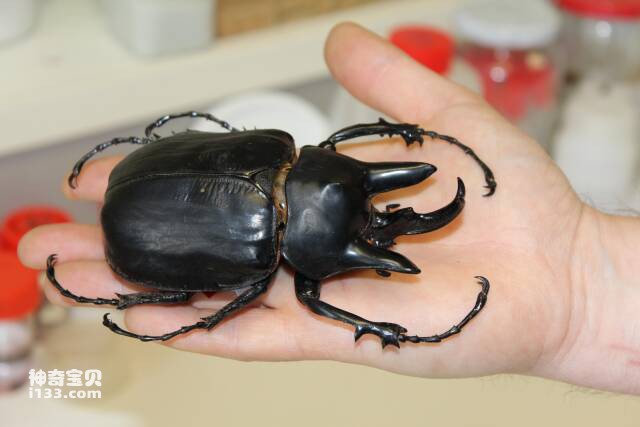
Actinus is a large beetle that lives in Central and South America. It belongs to the family Cerambycidae in the order Coleoptera, and is also known as the black giant-horned longhorned beetle or the Actaeon giant-horned longhorned beetle. This beetle is usually larger, with males reaching more than 6 centimeters in length, while females are relatively smaller. Their bodies are black or dark brown, and they have extremely conspicuous huge antennae, which are their most characteristic appearance. Actinus feeds mainly on tree sap and fruits, and occasionally on the larvae or dead matter of other insects. Because they live in tropical rainforests, they are usually active only at night, hiding among leaves and tree trunks during the day. The Actian worm has attracted much attention due to its unique shape and huge horns. In some cultures it is considered a sacred being and used as a source of artwork and symbolic objects.
5. Dynastes hercules (scientific name: Dynastes hercules)

The giant beetle is a large beetle that lives in Central and South America. It is also known as the Hercules beetle. They belong to the family Cerambycidae in the order Coleoptera, and are usually huge in size, with males reaching more than 10 centimeters in length. The body of this giant beetle is dark brown or black with colorful spots and lines. They are characterized by strong antennae and fan-shaped hind legs, making them more stable when climbing and fighting. It mainly feeds on tree sap, fruits and pollen, but also eats the larvae and carrion of other insects. They are usually active at night and hide in the leaves and trunks of plants during the day. Due to its large size and unique appearance, the giant beetle has become a favorite collectible and pet.
6. Phyllophorina kotoshoensis (scientific name: Phyllophorina kotoshoensis)
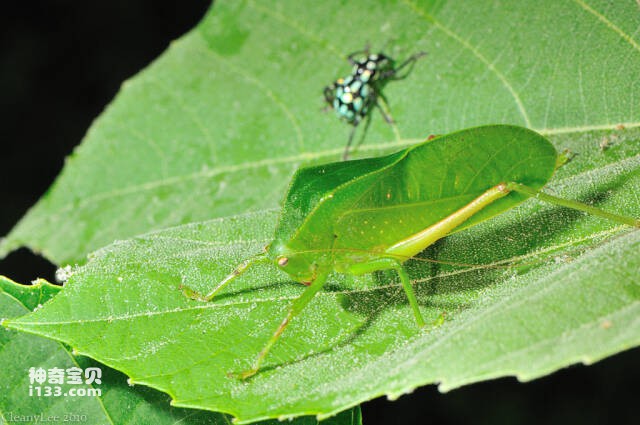
Orchid Island katydid, commonly known as Orchid Island katydid, is endemic to Taiwan, my country. The body is green, and the adult body is about 10 centimeters long. The back plate is large and well-developed, with a rhombus shape when viewed from the back, and obvious horn-like protrusions on both sides. The ovipositor of the female is well-developed, and the upper part is curved like a knife. The shape looks like a leaf when viewed from the side, and hiding on plant leaves is a good camouflage. The preferred host plants or resting plants of Orchid Island big-leaf katydids are climbing vines or shrubs of the Vitaceae, Pyropodaceae, Euphorbiaceae, Zoanaceae, Sapindaceae and Pachyphyllaceae families. When feeding, Taiwan Ivy or pink ivy plants on the island are easier to maintain, but detailed ecological research is still lacking.
7. Giant flower-lurking turtle (scientific name: Goliathus goliatus)
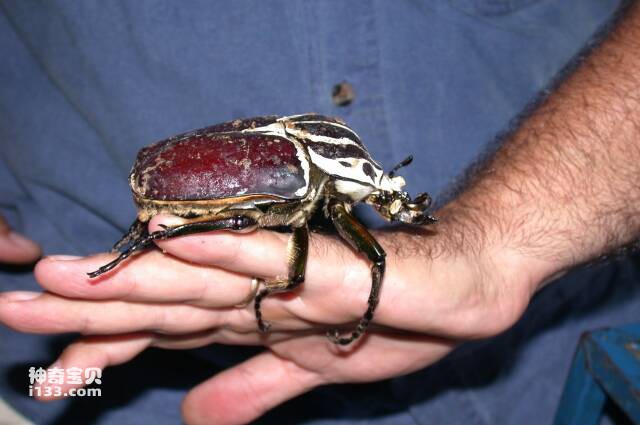
Both in terms of weight and size, the Giant Flower Lagoon is the largest insect on earth. They are native to Africa, and male adults can reach more than 11 centimeters in length and weigh up to 100 grams in their larval stage. They are considered vegetarian in nature, but are often eaten as a treat for cats and dogs. The beetle's body is yellowish brown or black with distinct spots and lines. Their strong antennae and fan-shaped hind legs make them more stable when climbing and fighting. Giant flower-lurking turtles mainly feed on tree sap, fruits and pollen, but also eat larvae and carrion of other insects. They are usually active at night and hide among leaves and tree trunks during the day.
8. Chinese mantis (scientific name: Tenodera sinensis)
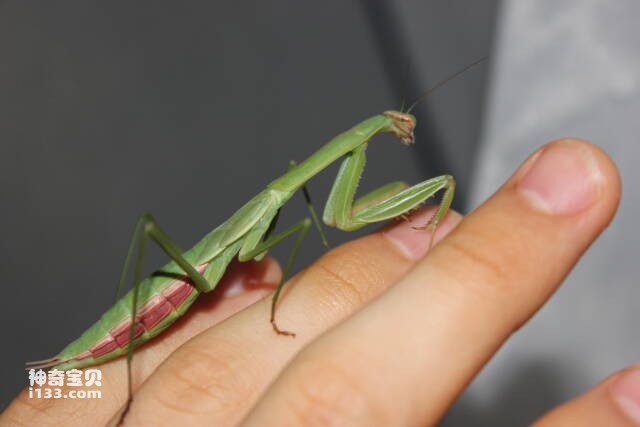
The Chinese sword mantis is a type of mantis native to my country, also known as the Chinese sword mantis or the Chinese martial arts mantis. It is a highly adaptable insect that can be found in a variety of different climates and ecosystems. The Chinese mantis is about 7-9 cm long, with a green body and three black lines on its chest. Their antennae are very long, taking up more than half of the entire head length. Like other mantises, the Chinese broadsword mantis has a very strong predatory ability and can quickly catch and destroy other insects. In addition to playing an important ecological role in nature, the Chinese mantis is an important symbol in traditional Chinese martial arts. His graceful figure and unique fighting skills have become one of the representatives of Chinese martial arts culture.
9. Rhino cockroach (scientific name: Macropanesthia rhinoceros)
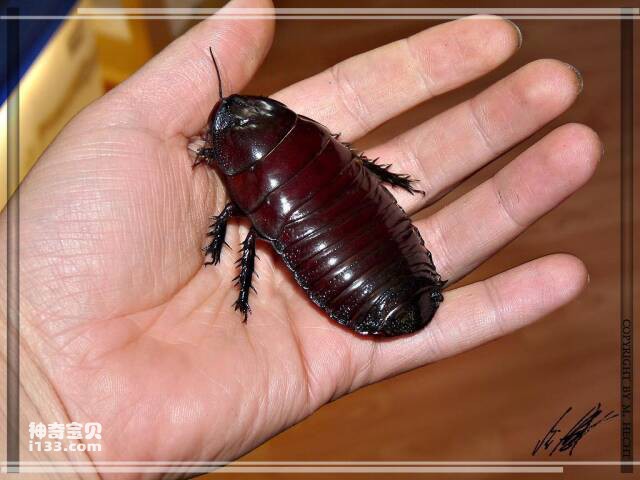
The rhinoceros cockroach is a large cockroach from Australia and New Guinea, also known as the rhinoceros cockroach. It is one of the largest cockroaches in the world, with a body length of 8-10 cm and a weight of more than 30 grams. The body of the rhinoceros cockroach is dark brown or black with a shiny surface. Their heads are small, their front chest is flat and wide, and their back chest is particularly strong. The rhinoceros cockroach gets its name from the pair of horn-shaped protrusions on its head and front thorax that resemble the horns of a rhinoceros. Rhinoceros cockroaches typically live in wooded areas in forested areas and low-elevation mountains. They feed on decaying vegetation and fallen leaves, and sometimes insects, bird eggs, or small reptiles. Although the species is relatively common in the wild, they still face threats such as habitat destruction and illegal capture. Due to their large size and unique appearance, rhinoceros cockroaches are often prized by collectors.
10. Desert spider wasp (scientific name: Hemipepsis ustulata)
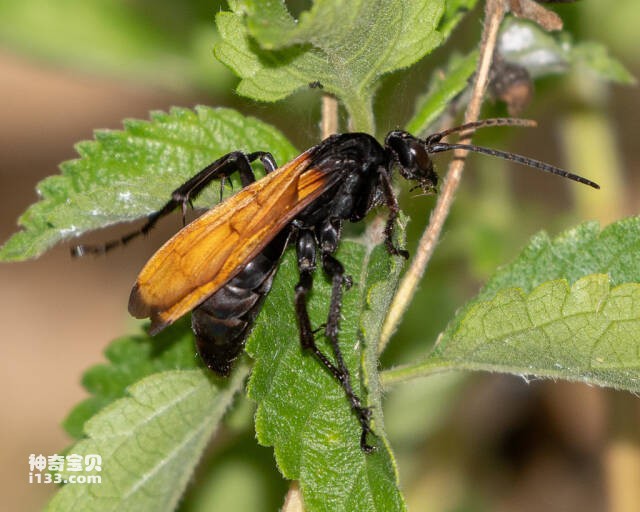
The desert spider wasp, also known as the desert spider hunter bee, is a hymenopteran insect that lives in North America, Central and South America, and is also called the desert spider hunter bee. They feed primarily on spiders and are excellent predators. Desert spider wasps are usually active during the day, especially when the sun is bright. They use their long, strong claws to quickly grab less poisonous spiders, spray a paralyzing agent on their bodies, and drag them back to their nests. Inside the nest, the wasp lays eggs and, after hatching, deposits the larvae on paralyzed spiders to feed on. Desert spider hunting wasps play an important role in the ecosystem, maintaining ecological balance by controlling the abundance of other invertebrates. At the same time, they are also insects that are very adaptable to extreme environments and can survive and reproduce in arid areas such as deserts. Because they are a very dangerous insect with a very powerful sting, they have few natural enemies. There are only a few animals that have natural enemies, one of which is the roadrunner.
The above introduction to the top ten largest insects in the world is mainly compiled based on relevant websites. The body length, weight and appearance characteristics of related insects are summarized and sorted and recommended according to the body length of related insects. The ranking is for reference only. If you have any questions, please leave comments/criticisms at the end.
animal tags:
We created this article in conjunction with AI technology, then made sure it was fact-checked and edited by a Animals Top editor.